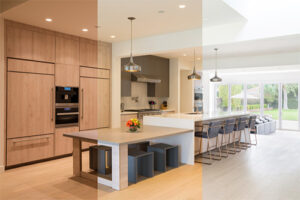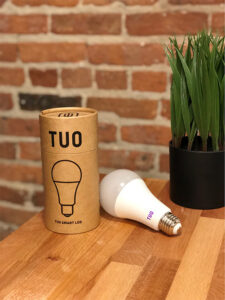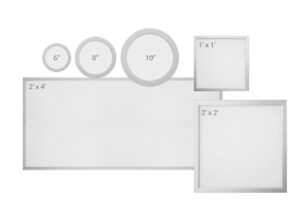 What if a simple lightbulb could help you feel energized during the day and sleep better at night? Make it an energy saving LED bulb and this could transform your health! Circadian lightbulbs are programmable LED bulbs that use science to awaken, energize and calm before bed, reflecting the body’s own circadian internal clock.
What if a simple lightbulb could help you feel energized during the day and sleep better at night? Make it an energy saving LED bulb and this could transform your health! Circadian lightbulbs are programmable LED bulbs that use science to awaken, energize and calm before bed, reflecting the body’s own circadian internal clock.
Circadian lighting has been shown to help with depression, Seasonal Affective Disorder (SAD) Alzheimer’s disease and PTSD. By applying the right light during daylight hours, your productivity, mood and overall health can improve.
We take a look at two different products on the market:
TUO Circadian Smart Products
TUO Circadian Smart Products uses smart bulbs paired with a smartphone app to dial in a programmed circadian  rhythm to your days and evenings. Other circadian rhythm lights activate the non-visual melanopsin in your eye that sends “action potentials” to your circadian clock. These melanopsin-focused lights require uncomfortably bright lights to activate your circadian clock effectively.
rhythm to your days and evenings. Other circadian rhythm lights activate the non-visual melanopsin in your eye that sends “action potentials” to your circadian clock. These melanopsin-focused lights require uncomfortably bright lights to activate your circadian clock effectively.
TUO Bulbs are designed to use light-sensitive color cones which send more action potentials to your internal circadian clock. Because of the difference in spectrum, TUO bulbs are easier to incorporate into your daily routines. Each bulb is separately programmed through the smart phone app and the company recommends TUO lights in rooms used when you first wake up and where you spend much of your active day, like a home office. To be most effective the TUO light should be the dominant light of the room and not powered by a dimmable switch.
 Wala Light Healthy LED Lighting System
Wala Light Healthy LED Lighting System
WalaLight takes a more lighting system approach to its circadian LED lighting products. Like TUO they offer programmable bulbs, but their system also employs in-ceiling WalaLight panels or WalaStar can lights that are ceiling mounted. The lighting adjusts between bright natural daylight (6500 Kelvin) to warm light (2200 Kelvin) and anywhere in between. Their science is based on the Sunlike chip that replicates natural light spectrum to mimic the light best suited to support your circadian rhythms.
Because the WalaLight system offers multiple lighting component options it can offer a finetuned circadian lighting experience overall. The company offers a programmable Intelligent Controls System that can operate the scientifically designed circadian rhythm lighting or allow for customization and overrides when schedules change.
It’s certainly worth test-driving the circadian lighting with a few bulbs to see if it works for your particular circumstances before committing to a complete system.
